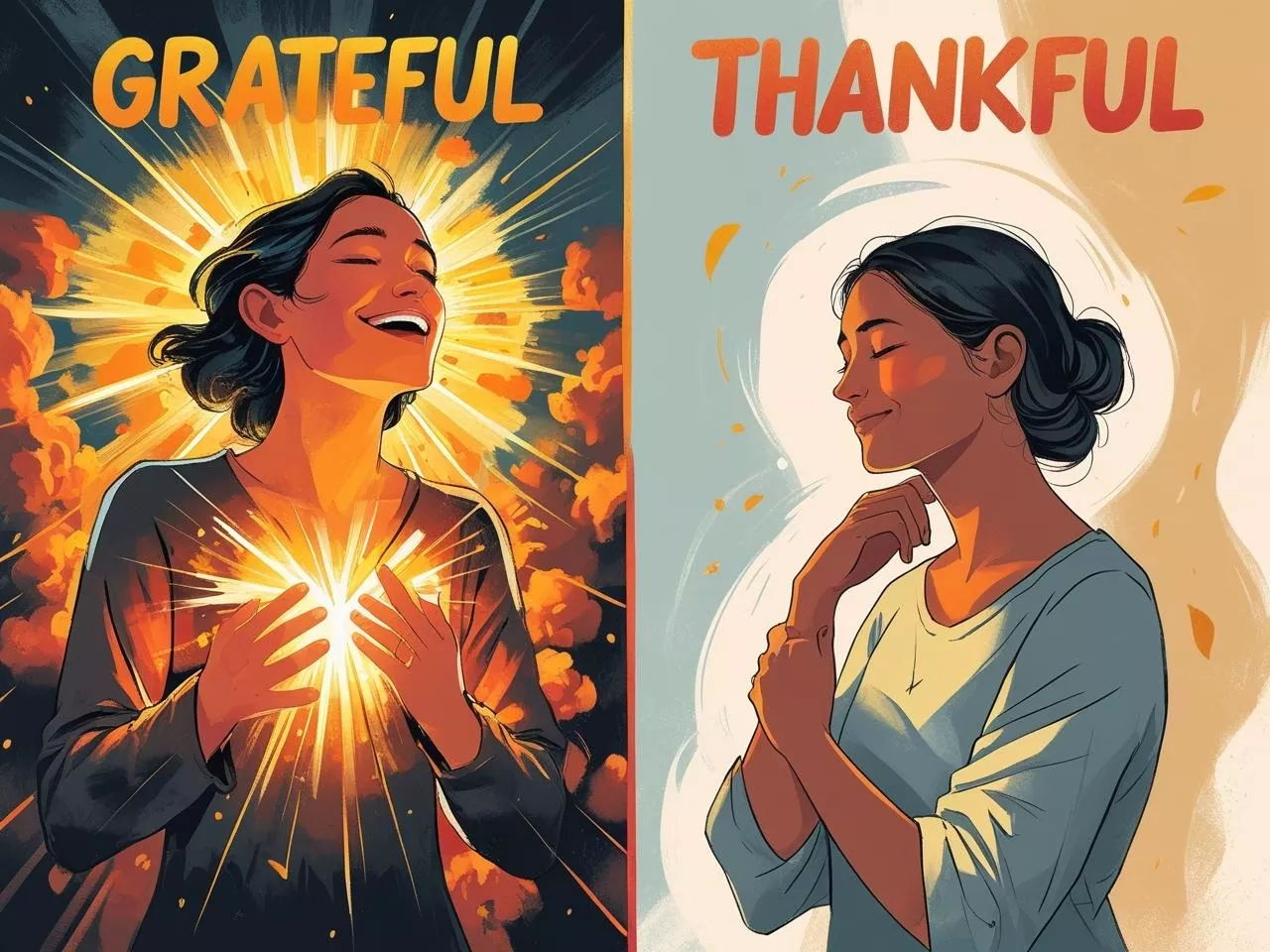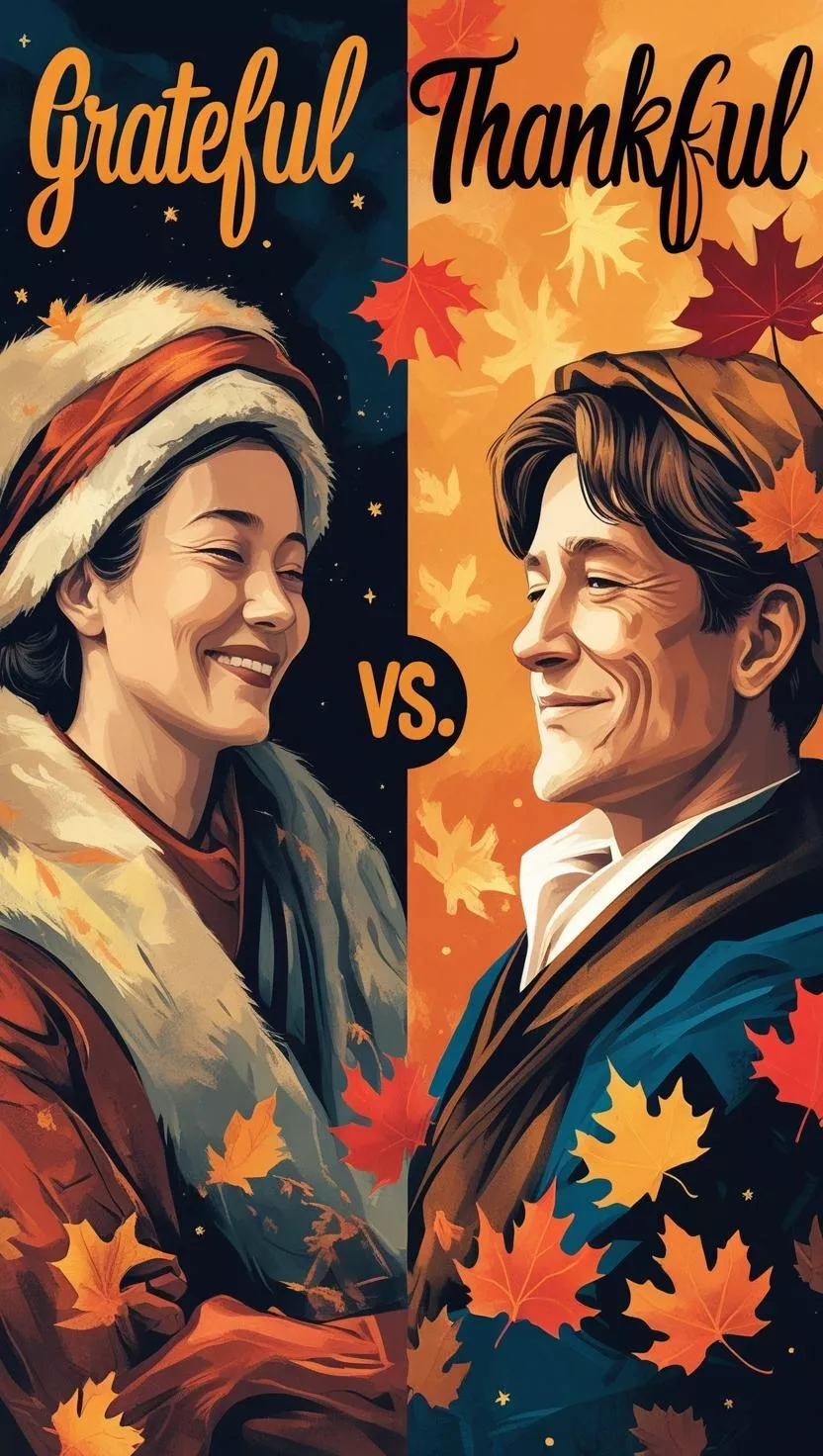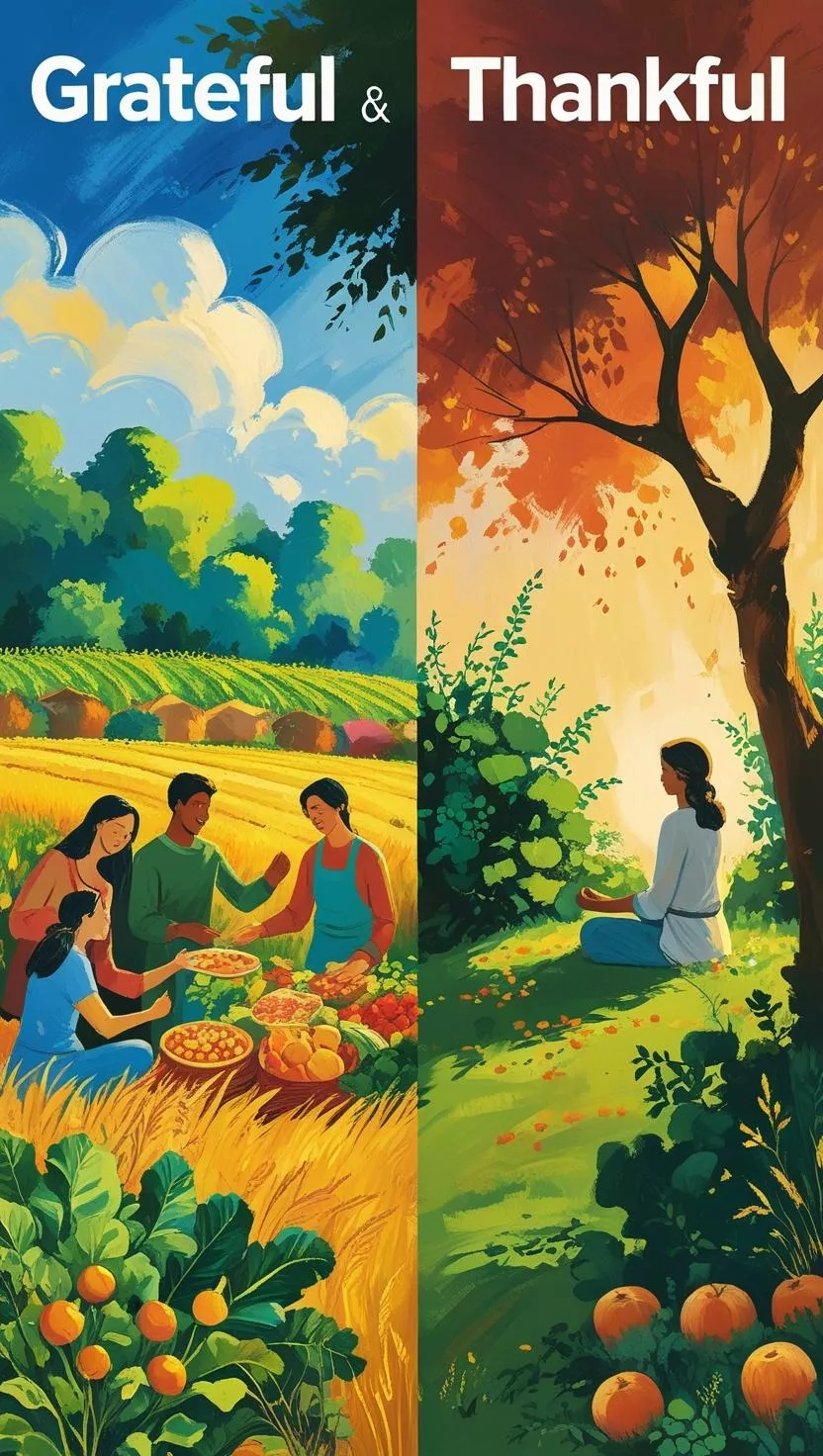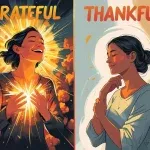In a world drowning in stress and bad news, gratitude and thankfulness are total game-changers.
They sound the same, but they’re not—getting the difference is like unlocking a secret level in life.
Here’s the deal: Thankfulness is that quick “thanks” when your friend hands you pizza.
Gratitude is the deeper wow-I’m lucky to have this friend feeling that sticks with you all day. And trust me, that difference matters.
Gratitude rewires your brain for happiness, crushes anxiety, and makes your friendships unshakable. I’ve seen it happen—it’s not fluff, it’s real.
The Fundamental Distinction: Emotion vs. Action
Here’s the scoop: gratitude is an inside feeling, thankfulness is more about what you do on the outside.
What Does It Mean to Be Grateful?
Gratitude is that warm, heart-level vibe that makes you appreciate life itself. It’s about:
- Feeling it inside: that cozy “I’m lucky” feeling
- Seeing the bigger picture: life, family, friends, even tough lessons
- Sticking around: it can last all day—or even longer
- Reflecting: noticing the good stuff in your life
Think of it like loving your life, your health, or even the challenges that taught you stuff—no one needs to hand you anything for you to feel it.
What Does It Mean to Be Thankful?
Thankfulness is more like hitting “thank you” in real life. It’s about:
- Pointing out specifics: someone helped you, gave you something, or did you a solid
- Showing it: saying “thanks” or giving a smile
- The back-and-forth: it usually involves a giver and a receiver
- Quick reactions: it pops up when something happens
Psychological and Emotional Implications
ver notice how some people just seem happier, sleep better, and bounce back faster from tough days? That’s gratitude at work—and it’s not just fluff.
Researchers like Dr. Robert Emmons and Dr. Martin Seligman have dug deep into this stuff, and the results are wild.
The Gratitude Advantage
Gratitude is like charging your brain with a happiness battery.
Think about it: when you actually feel grateful for life—your family, friends, health, or even the tough stuff that teaches you lessons—it rewires your brain.
Crazy, right? Studies show it can:
- Kick depression and anxiety to the curb
- Help you sleep like a baby (yes, really!)
- Make your immune system stronger, like leveling up your health stats
- Make life feel more awesome overall
Imagine keeping a gratitude journal like a secret weapon—you jot down a few things you’re grateful for, and suddenly your brain starts noticing all the good stuff around you.
The Power of Thankfulness
Now, thankfulness is like the social spark plug.
It’s about giving shout-outs in real life: “Thanks for covering my shift!” or “Hey, that snack was epic, thanks!” Why bother? Because science shows it:
- Builds rock-solid friendships and relationships
- Turns your team or class into a squad that actually vibes together
- Makes people want to keep being kind, creating a chain reaction of good vibes
- Helps you notice others’ contributions and boosts your empathy
So, gratitude is your internal superpower, making life feel rich and happy.
Thankfulness is the action hero, lighting up your world and everyone around you with just a little “thank you.”
Practical Applications in Daily Life
Want to actually level up your mood and relationships?
Knowing the difference between gratitude and thankfulness isn’t just theory—it’s like having two cheat codes for life.
Let’s break it down:
Flex Your Gratitude Muscle
Think of gratitude as your personal happiness engine.
Here’s how to fire it up:
- Morning power-up: Every morning, name three things you’re genuinely grateful for. Could be your health, your friends, or even that annoying homework.
- Gratitude meditation: Spend 10-15 minutes just soaking in that warm, “wow-I’m lucky” feeling. Don’t think about stuff you have to thank someone for—just feel it inside.
- Gratitude journaling: Write down moments, people, or even challenges that make you feel lucky. Focus on the feelings, not just a boring list.
- Flip the script on problems: Tough day? Find something in it to be grateful for—maybe a challenge taught you grit, patience, or creativity.
Fire Up Your Thankfulness
Thankfulness is the superhero that spreads good vibes to others. Here’s how to wield it:
- Be specific: Don’t just say “thanks.” Say, “Thanks for helping me with my project—it made a huge difference.” People feel that.
- Thank-you notes: Yep, old-school handwriting still slaps. A little note can make someone’s day feel legendary.
- Public shout-outs: Call out someone’s kindness in front of friends, classmates, or even on social media. It’s like tossing confetti of appreciation—they’ll notice.
- Pay it forward: Show your thanks through actions. Someone helped you? Help them back—or help someone else. Kindness boomerangs, and it feels amazing.
Common Mistakes to Avoid
Even superpowers have pitfalls—gratitude and thankfulness are no different.
Let’s make sure you’re not tripping yourself up:
1. Over-generalizing Gratitude
Feeling grateful is awesome, but “I’m grateful for everything” is like saying, “I love all video games equally”—it’s vague and kinda meaningless.
Zoom in on real stuff that makes your heart actually glow.
That weird inside joke with your friend? That perfect slice of pizza? Those count.
2. Performative Thankfulness
Ever said “thanks” just because you had to? That’s performative, and people can sense it.
Authentic thankfulness is like giving a high-five from the soul—it feels real and makes others feel real too.
Fake thanks is like giving someone a plastic trophy—it doesn’t stick.
3. Comparing Your Gratitude
“Yeah, I should be grateful because other people have it worse.” Sound familiar? That’s a trap.
Gratitude isn’t a contest. Comparing your life to someone else’s just blocks your own feelings.
Your struggles are real, and your gratitude should sit alongside them, not erase them.
Moving Forward: Integrating Both Concepts
Think of it like this: gratitude is your phone charger.
It’s that quiet moment when you feel good about your life, your friends, your favorite game—basically, your inner battery filling up.
Thankfulness is how you use that charge—like sending a fun text to your friend, dropping a fire comment on their video, or telling your mom the pasta she made was amazing.
You’re taking that energy and sharing it.
Here’s the catch: you can’t just feel grateful and never say anything—that’s like having a full battery but never touching your phone.
And you can’t just say “thanks” all the time without actually feeling it—that’s like a dead phone, black screen, no juice.
But when you put them together? That’s when the magic happens.
You fill yourself up with gratitude and use it to make other people feel awesome.
Conclusion: Embracing the Full Spectrum of Appreciation
Gratitude is your personal happiness fuel—it’s that quiet “wow, life’s actually pretty good” feeling.
Thankfulness is how you use that fuel—tagging a friend in a meme, telling your teacher they crushed it, or just saying “thanks” when it matters.
You need both. Gratitude fills you up. Thankfulness spreads it.
Start small: notice one thing, say one thank you. It’s not cheesy—it’s powerful. Do it, and watch how everything changes.










Leave a Reply